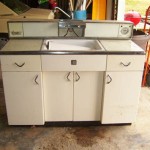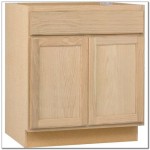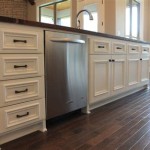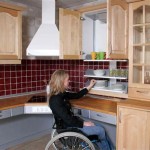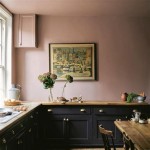Alternative Kitchen Cabinet Materials: Beyond Wood and Laminate
The kitchen, often considered the heart of the home, demands both functionality and aesthetic appeal. Kitchen cabinets, a significant element in defining the space, have traditionally relied on wood and laminate as primary materials. However, homeowners are increasingly exploring alternative options to achieve unique designs, enhance durability, and address environmental concerns. This article delves into a variety of alternative kitchen cabinet materials, examining their properties, advantages, and potential drawbacks.
Stainless Steel Cabinets: Durability and Hygiene
Stainless steel cabinets represent a shift towards a modern, industrial aesthetic. Primarily found in commercial kitchens due to their unparalleled hygiene and durability, stainless steel is gaining traction in residential settings for its sleek appearance and resistance to water, stains, and heat.
One of the key benefits of stainless steel is its non-porous surface. This characteristic makes it exceptionally easy to clean and sanitize, preventing the growth of bacteria and mold. In addition, stainless steel is highly resistant to corrosion, ensuring longevity even in humid environments. Its ability to withstand extreme temperatures without warping or melting makes it a safe choice near cooking appliances.
However, stainless steel cabinets come with certain considerations. The material can be more expensive than traditional wood or laminate options. Stainless steel is also susceptible to fingerprints and smudges, requiring frequent cleaning to maintain a pristine appearance. The aesthetic of stainless steel can be perceived as cold or sterile by some, potentially requiring careful design integration to create a warmer and more inviting atmosphere. The material can also be noisy; the clang of pots and pans against the steel can be amplified within the closed cabinet space.
Furthermore, repair options for dents or scratches on stainless steel cabinets are limited. While minor imperfections can sometimes be buffed out, significant damage may necessitate panel replacement. Therefore, homeowners opting for stainless steel cabinets should be mindful of these factors and consider the overall design context of their kitchen.
Glass Cabinets: Openness and Visual Appeal
Glass cabinets offer a different approach, emphasizing openness and visual display. Unlike solid-door cabinets, glass-fronts allow a glimpse into the contents, creating a sense of spaciousness and highlighting decorative items. Glass can be incorporated in various ways, from full glass doors to smaller glass panels within a wooden or metal frame.
One of the primary advantages of glass cabinets is their ability to brighten a kitchen. Glass reflects light, making the space feel larger and more airy. This is particularly beneficial in smaller kitchens or those with limited natural light. Glass-fronted cabinets also serve as a display case for china, glassware, and other collectibles, adding a personalized touch to the kitchen design.
However, glass cabinets require careful attention to organization. Items stored behind glass are visible, so clutter and disarray will be readily apparent. This necessitates a commitment to maintaining a tidy and aesthetically pleasing arrangement. Furthermore, glass can be fragile and susceptible to breakage, particularly in households with young children or pets. Tempered glass, which is significantly stronger and less likely to shatter into sharp pieces, is a recommended option to mitigate this risk.
The cost of glass cabinets can vary depending on the type of glass used, the size and style of the doors, and the complexity of the installation. Custom-made glass doors may be more expensive than standard options. Homeowners should also consider the hardware used for glass cabinets, as it can contribute to the overall aesthetic and functionality. Hinges and handles should be chosen carefully to complement the glass and the surrounding cabinetry.
Concrete Cabinets: Industrial Chic
Concrete cabinets represent a bold and contemporary choice, embodying an industrial chic aesthetic. This material, typically associated with construction, is gaining popularity in kitchen design for its unique texture, durability, and versatility. Concrete cabinets can be cast in various shapes and sizes, offering a high degree of customization.
Concrete's inherent strength and durability make it a long-lasting option for kitchen cabinetry. It is resistant to heat, scratches, and stains, making it suitable for high-traffic areas. The material's thermal mass also helps to regulate temperature, potentially contributing to energy efficiency. Concrete can be stained or pigmented to achieve a wide range of colors and finishes, allowing for design flexibility.
However, concrete cabinets are significantly heavier than traditional wood or laminate cabinets, requiring a robust support structure. This may necessitate reinforcement of the floor and walls to ensure structural integrity. The porous nature of concrete also means that it needs to be properly sealed to prevent water absorption and staining. Regular sealing is essential to maintain its appearance and prevent damage.
The cost of concrete cabinets can be substantial, as the material and fabrication process can be complex. Custom molds and specialized installation techniques may be required, adding to the overall expense. Homeowners considering concrete cabinets should also be aware that the material can develop hairline cracks over time, which is a natural characteristic of concrete and does not necessarily compromise its structural integrity. These cracks can be minimized with proper sealing and maintenance.
Acrylic Cabinets: Modern and Lustrous
Acrylic cabinets offer a modern and high-gloss aesthetic. This material is known for its smooth, non-porous surface, which is similar in appearance to glass, but with added benefits in terms of durability and ease of maintenance. Acrylic cabinets are available in a wide range of colors and finishes, allowing for a variety of design styles.
Acrylic is a durable and impact-resistant material, making it less prone to scratches and damage compared to other alternatives like laminate. It is also easy to clean and maintain, requiring only a simple wipe-down with a damp cloth. The high-gloss finish of acrylic cabinets reflects light, making the space feel brighter and more open. Acrylic is also UV resistant, which helps to prevent fading or discoloration over time.
However, acrylic cabinets can be more expensive than laminate or wood cabinets. The high-gloss finish can show fingerprints and smudges more easily than matte finishes, requiring more frequent cleaning. While acrylic is more durable than glass, it is still prone to scratches if not handled carefully. It is important to use non-abrasive cleaners and soft cloths to avoid damaging the surface.
The manufacturing process for acrylic cabinets often involves bonding an acrylic sheet to a core material such as MDF (Medium-Density Fiberboard) or plywood. The quality of the core material and the bonding process can affect the overall durability and longevity of the cabinets. It is important to choose a reputable manufacturer and inspect the cabinets carefully before installation to ensure that they are of high quality.
Melamine Cabinets: Affordable and Versatile
Melamine cabinets are constructed from composite wood, such as particleboard, covered with a thermosetting resin. This resin surface lends melamine cabinets their durability, versatility, and cost-effectiveness, making them a popular choice in contemporary kitchens.
One of the primary benefits of melamine is its affordability. It is significantly cheaper than solid wood or stainless steel. Melamine is also a very stable material, meaning it is less prone to warping or cracking than wood. It is water-resistant, making it easy to clean and maintain. Melamine cabinets are also available in a wide range of colors and finishes, including wood-grain patterns, giving homeowners a wide range of design options.
However, melamine cabinets are not as durable as solid wood or stainless steel. The edges of the melamine are covered with edge banding. If the edge banding is not applied correctly, the edges can chip or peel over time. Also, if you plan to refinish or paint your cabinets, melamine can be difficult to work with.
Melamine is a smart option for homeowners looking for a stylish and budget-friendly choice. Melamine cabinets are a smart choice if you are on a budget, and you want cabinets that will stand up to everyday use.
The exploration of alternative kitchen cabinet materials demonstrates a growing desire for innovation and personalization in home design. While traditional wood and laminate remain viable options, materials such as stainless steel, glass, concrete, acrylic, and melamine offer unique aesthetic and functional qualities. Homeowners should carefully consider their individual needs, design preferences, and budget constraints when selecting the appropriate material for their kitchen cabinets, ensuring a space that is both functional and visually appealing.

7 Best Kitchen Cabinet Materials To Protect You From Poor Quality Horrors

Alternative Cabinet Materials Kitchen Design Concepts

Alternative Cabinet Materials Gilmans

10 Alternative Materials For Your Kitchen Worktop

10 Alternative Materials For Your Kitchen Worktop

Choose Alternative Cabinet Materials For A Unique Kitchen

Types Of Kitchen Cabinet Materials In Malaysia Recommend My

Kitchen Cabinet Alternatives Rowe Spurling Paint Company

7 Best Kitchen Cabinet Materials To Protect You From Poor Quality Horrors

Alternative Cabinet Materials Gilmans
Related Posts

